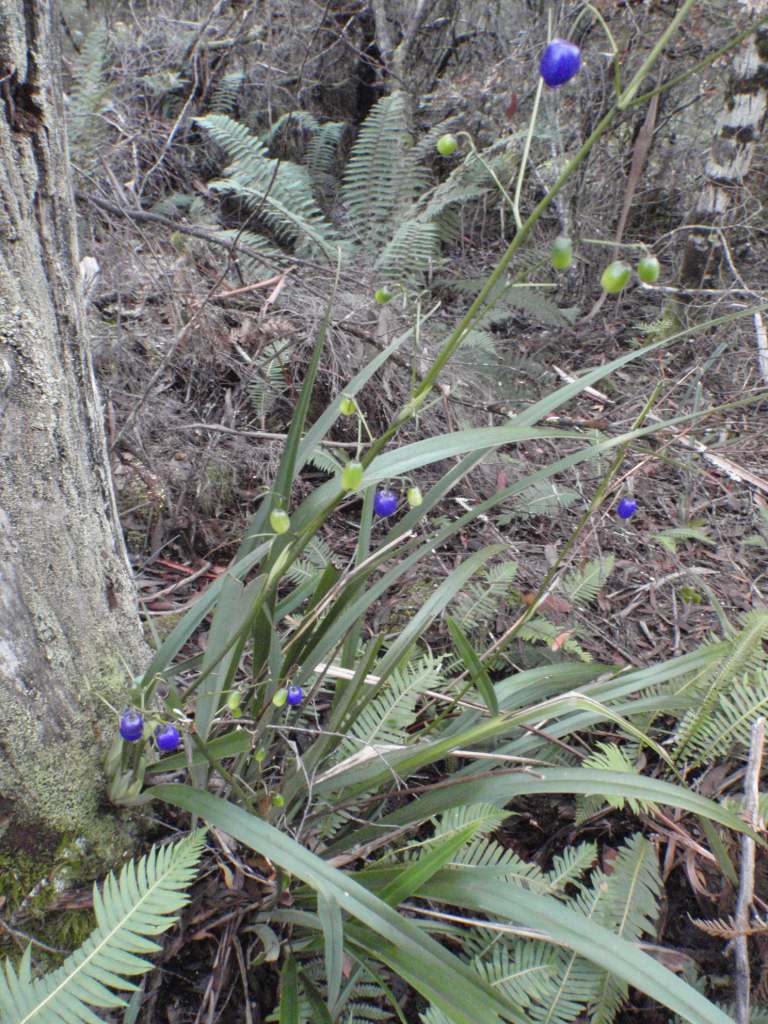Scientific Name: Dianella tasmanica
Common Name: forest flaxlily
Family Classification (Clade): Monocots
Family: Hemerocallidaceae
Form Description: Tufted plant forming dense clumps and tussocks.
Height (m): 0.5 – 1.5
Flowers: Blue lilies with 6 prominent yellow stamens in the middle.
Fruit: Berry – blue-purple, oval-shaped containing black, shiny seed. Fleshy fruits turn soft when mature.
Municipality
Plant Communities
Habitat Notes
Widespread and common especially in wetter areas on rocky hillsides, sea level to mountain foothills.
Site Tolerance
Moist, Rocky, Shady
Soil Tolerance
Fertile, Loam, Sandy, Well-drained
Frost Tolerance
Hardy
General Notes
Plants spread by stout rhizomes and may be invasive. Divided plants can either be planted directly into their final growing position or potted up and grown on for a year. Remove half of the leaf area to reduce transpiration and water loss and aid establishment. Bird attracting. Used in traditional Palawa basket weaving. Also used in contemporary basket weaving.
Propagation Calendar
-
Flowering Month
Jan Feb Mar Apr May Jun Jul Aug Sep Oct Nov Dec -
Seed Collecting Month
Jan Feb Mar Apr May Jun Jul Aug Sep Oct Nov Dec -
Sowing Month
Jan Feb Mar Apr May Jun Jul Aug Sep Oct Nov Dec -
Cutting Month
Jan Feb Mar Apr May Jun Jul Aug Sep Oct Nov Dec
Propagation Method
Seed Information
Seed Collection
Collect into plastic bags as paper bags become soggy. Allow to ferment for several weeks. Clean fermented pulp from seeds by soaking in a sugary solution and sow immediately.
Seed Storage Life
6-12 months
Seed Treatment Notes
Hot water treatment of seed before sowing has been successful. 1 or 2 drops of detergent will help break surface tension and allow water penetration. Smoke treatment has increased results for some species. A light scarification with sandpaper has also been recommended. Temperature may be critical in germination i.e. not above 18°C (Andrew Stevenson, Wildseed Tasmania.) Autumn sowing is best.
Germination Time
2 weeks-several months
Cutting & Division Information
Division of rhizomes during the autumn and early winter is the quickest method of propagation.

